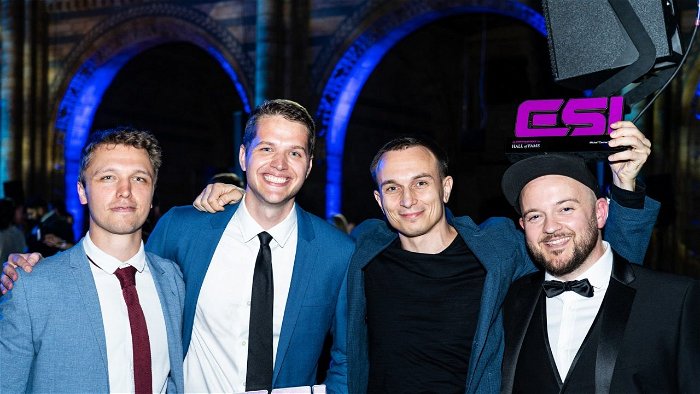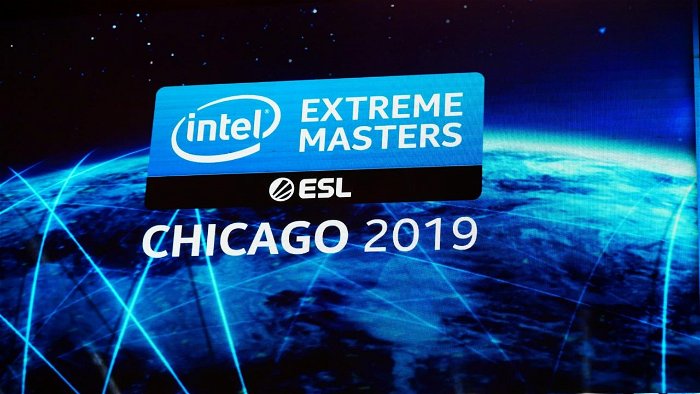It’s a scorching hot day outside of the United Centre in downtown Chicago. The stadium, which has seen some of the greatest sporting moments in history, is technically in off-season, as both the Chicago Bulls and Blackhawk’s enjoy their summer break.
Yet inside, the stadium has been taken over by thousands of rabid fans, chanting, cheering and willing the home-town favourite, Team Liquid squad on to victory. Simply hearing the roar of the crowd, you would be forgiven for thinking that the Bulls were in the playoffs, or that the Blackhawks were playing a division rival. But this electric atmosphere is simply the reality of Intel Extreme Masters Chicago, a two-day esports competition, and one of the many tournaments that Michal Blicharz is in charge of running.
From being an award-winning journalist, to a video producer for SK Gaming, to now serving as the Vice President of Gaming at ESL, Michal Blicharz is no stranger to the world of esports. Together with ESL, the oldest and largest esports company in the world, Blicharz has grown the Intel Extreme Masters series into a worldwide juggernaut, and one of the best-known esports series in history.
CGMagazine’s Alex Handziuk was able to sit down with Blicharz at Intel Extreme Master’s in Chicago to talk about esports’ rapid expansion, what he thinks about the Overwatch League’s city-based system and what the future holds for women in esports.

CGMagazine: Who should be in charge of covering esports, video game journalists or sports journalists?
Michal Blicharz: There are two sets of people and both of them are on a team. They practice very hard for a common goal and they enter a game, which has set rules that other people want to watch. That is extremely exciting. In that game, they are comparing each other’s talents and the score at the end of the game says whose talents is higher, and it’s fascinating to watch. What did I just describe? Did I describe sports? Because I was describing esports. So there’s your answer. It’s the same as who should cover Formula One? Should it be an auto magazine that covers the latest and greatest in car engine technology, or should it be a sports magazine?
When we had one of our first stadium events, back in 2014 a very senior person from Intel came in as our title sponsor. We recognized that he had a lot of power with our main sponsor and that we needed to explain to this person what was going on. So I sat with him in the VIP section and I was trying to explain the game. While I was doing that the home team from Poland came in, and the entire stadium started chanting their name so loudly that I had shivers down my spine. At that moment the Intel guy looked over at me and said, ‘Stop talking, I get it.’
And that’s the beauty of esports. When you experience it you understand, it. It’s an emotion, that’s just the same as sports. It’s emotion, that’s generated by watching people that for whatever reason you care about, either they’re from the same country, or they are super talented, and you want to do what they do, they inspire you. Ultimately, you’re comparing two great players to each other. You ask anyone in the world who the best football player in the world is, past and present and they’ll give you different answers. Is it Messi? Ronaldo? Pele? Either way, you discuss it forever, because it’s exciting. It’s the same thing in esports. I could sit here and talk for hours about what’s exciting about it, but all you need to do is just sit there in that stadium and soak it in.

CGMagazine: What went into ESL’s decision to make CSGO tournament-based, instead of having a league-based format like the Overwatch League?
Michal Blicharz: That traditional model that Overwatch League employs, isn’t necessarily right, and that doesn’t mean that they’re wrong. That being said, if you think about the model you described with the, ‘Hey, this is the New York team, this is the Toronto team, this is the whatever team,’ that model is over 100 years old. You know what they didn’t have 100 years ago? How about the internet, how about airfare that can get you anywhere? The first World Cup in football, teams from Europe took a ship to Uruguay. We’re talking about sports structures designed in a time when teams took a ship for several, weeks to go to Uruguay from Europe. Now I can go to Uruguay, have breakfast, and on the same day fly back to Europe. The world’s changed with the introduction of the internet, global broadcasting rights, being able to play against opponents from multiple different countries in the space of an hour. There are esports teams where five players are from five different countries, they can practice and compete together, and they’re just as viable, as a team that plays in the same room with each other. The world has changed and we need to figure out solutions that play best to the strengths and potential of what we have at our disposal today, as opposed to copying an idea that’s 120 years old.
The reason that major sports like the NFL and NBA are structured that way is because of money. How do you make maximum money when you don’t have any broadcasting rights revenue? Well, you hold as many games as you can. That’s why the NBA has 82 games per team. Across 82 games, how many of them are meaningful to the degree that you go, ‘holy crap, I can’t miss this.’ We don’t want to copy that and we shouldn’t copy that. Did the Chicago Bulls become the global brand that they are because of the city of Chicago? No, they did so because of Michael Jordan. Why would you go back and localize yourself to a city when you want to make money globally? Why would you go back?
CGMagazine: What does ESL do to try and bridge this gap?
Michal Blicharz: At ESL and Intel we work with AnyKey, to try to solve these issues and help. One of the things that we do, for example, is every year in Katowice we have a woman’s tournament with prize money. We treat female teams the same way we treat men’s teams, and they compete. The idea here is that we create champions that women can be inspired by. It’s fairly well documented in sociology that it’s easy for you to be inspired by a person that is similar to you. We want to create champions to show off the best Counter-Strike Team in women’s Counter-Strike, and then put them on a pedestal, shine a spotlight on them and see what it does. Because maybe they don’t want to be like ‘s1mple’, maybe they want to be like the women’s champion.

CGMagazine: Do you think that teams are hesitant to put quality female players on their roster?
Michal Blicharz: I don’t think so. As a team part of what you do is you create value for sponsors. If most of the top players are men and you have a top player that’s a woman, then that is immediately the most marketable player on the planet. Teams would love to have a top female athlete or female pro on the roster because it’s great business sense. It just makes a lot of sense from a strictly business, capitalistic point of view. I’m sure most teams in the world if they could find a woman that plays on the level of the top men, they would immediately put the woman on the roster.
CGMagazine: How do you deal with the fans constantly asking for you to hold tournaments in their home city?
Michal Blicharz: There’s one commentator here named Matt Trivett and he’s Canadian. He tells me that we should go to Vancouver, and then some people say we should go to Tokyo. I’ve been asked by countless people for the last decade, ‘When are you bringing Intel Extreme Masters to my country or my town?’ The answer is that there are so many amazing places and with Intel Extreme Masters we can only visit maybe four or five a year. Right now we have one in Australia, one in North America, one in Europe and one in China. It’s a little bit difficult to expand on it. I was just in St. Petersburg where my grandmother is from and I would like to bring it there and I would like to do it in Argentina, and everywhere in the world.
You can read the full interview in CGMagazine #38 available online and at select magazine retailers.




